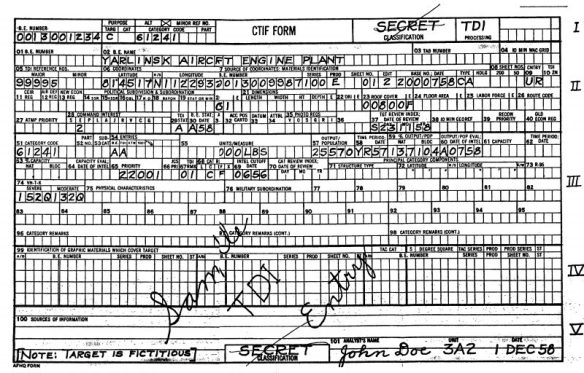 Ever since I first wrote about the US Air Force’s Bombing Encyclopedia of the World (see here, here, and here) I’ve received endless e-mails about the project, but now there is a wonderful article by Elliott Child – ‘Through the wringer: Mass interrogation and United States air force targeting intelligence in the early cold war’ – that goes into extraordinary detail about the back-story. It’s just appeared on the Political Geography website (https://doi.org/10.1016/j.polgeo.2019.102052).
Ever since I first wrote about the US Air Force’s Bombing Encyclopedia of the World (see here, here, and here) I’ve received endless e-mails about the project, but now there is a wonderful article by Elliott Child – ‘Through the wringer: Mass interrogation and United States air force targeting intelligence in the early cold war’ – that goes into extraordinary detail about the back-story. It’s just appeared on the Political Geography website (https://doi.org/10.1016/j.polgeo.2019.102052).
Here is the abstract:
Mass interrogation systems are recurrent features of US military action. They are technopolitical apparatuses, disclosing their own spatial practices, choreographic repertoires, persistent technical features, and political ef- fects. They are often large-scale, sophisticated arrangements of expertise, technologies, and scriptural processes. Their design features therefore matter. This paper examines how, in the early cold war, mass interrogation was the chief means by which geographical knowledge of the communist world was gathered by the US Air Force. Project Wringer was one of the largest systematic interrogation programmes undertaken during this period, involving over 300 000 subjects, mostly German and Japanese ex-servicemen recently returned from the Soviet Union. Before the advent of systematic aerial reconnaissance, an assemblage of intelligence and interrogation instruments, agencies, and rationalities were was brought together, drawing in human subjects, compiling their knowledge, testimonies, and memories, transforming them into abstract intelligence for broader circulation. It seemed to permit sight in the cold war ‘darkness’ and was critical to production of the Bombing Encyclopedia, an enormous aggregation of industrial, economic, and urban geography. The paper pulls this apparatus apart, focusing on its informational settings and productivist rationalities. By economically recording, disarticulating, layering, and recombining many oral accounts, interrogation materials were pushed through a ‘wringer’ that scrubbed them of subjectivity. Blurry remembered responses became solid, mobile, paper products with objective, cartographic power, a key abstractive process in the development of numerical target codes. The Project Wringer-Bombing Encyclopedia system signals that the spatialising function of military interrogation has been underexamined.
Moe on the Bombing Encyclopedia from Stephen Collier and Andrew Lakoff here.
And you can find an intriguing, detailed and once classified report on one of the successor projects to Project Wringer, Gregory Pedlow and Donald Weizenback, The Central Intelligence Agency and overhead reconnaissance: the U2 and Oxcart Programs 1954-1974 here (start with footnote 2!).
